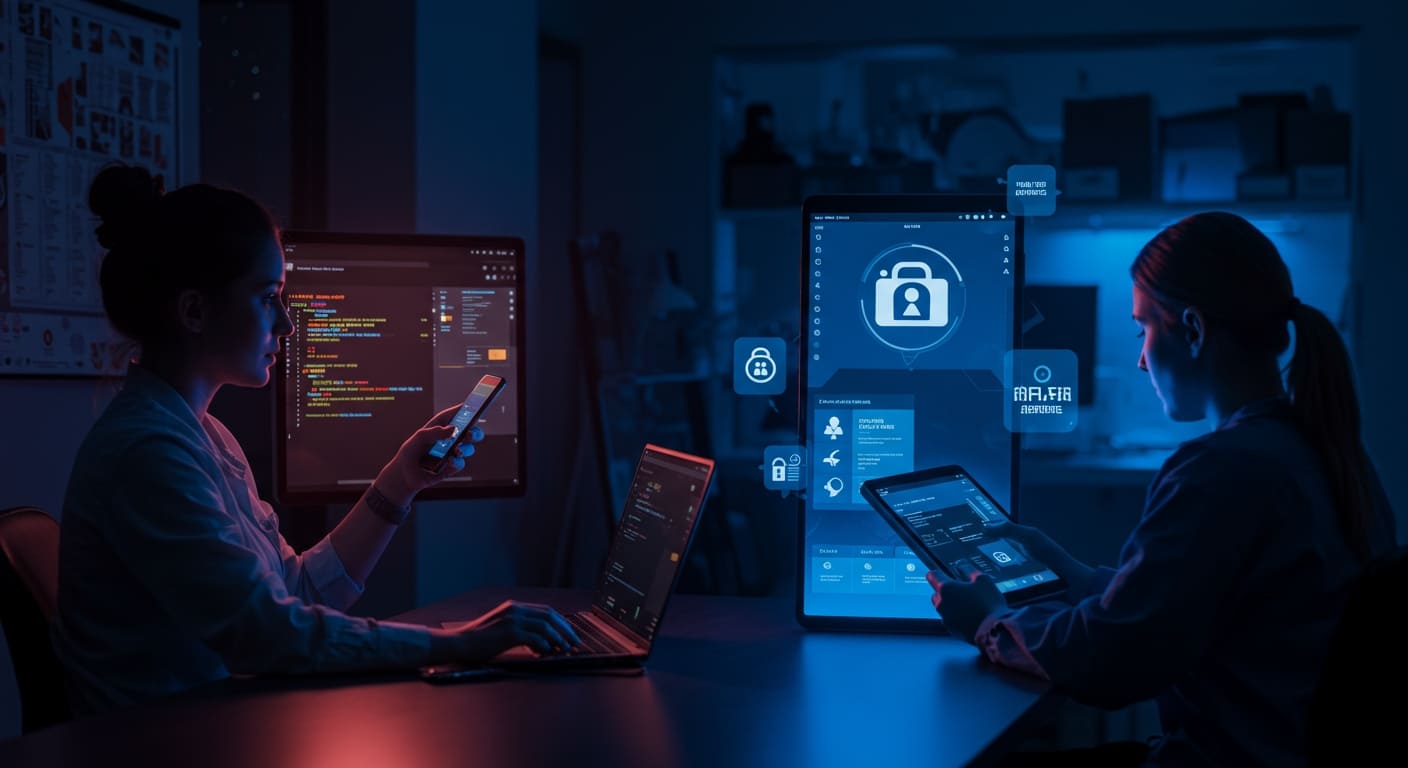Ever worried about how to keep sensitive health data secure on mobile apps? If you’re developing HIPAA mobile apps, protecting user data isn’t just important—it’s legally mandatory. But making your app fully HIPAA-compliant can feel like navigating a maze of regulations and tech challenges. In this guide, I’ll break down exactly how to build HIPAA-compliant mobile applications that ensure secure storage and robust user data protection, so you can build trust and avoid costly mistakes.
Understanding Secure Storage for HIPAA Mobile Apps
When it comes to building HIPAA mobile apps, secure storage lies at the very foundation of compliance. The HIPAA Security Rule requires covered entities and their business associates to protect electronic protected health information (ePHI) wherever it resides. This means understanding what ePHI is, the nuances of storage options, and encryption methods that keep data safe both on the device and in the cloud.
Overview of ePHI and Storage Requirements
ePHI includes any health information that can be linked to an individual—like medical records, treatment information, or billing details—stored, processed, or transmitted electronically. Under HIPAA, this data must be stored securely to prevent unauthorized access, disclosure, or alteration.
This entails implementing encryption for data at rest and during transmission. Additionally, you need to ensure data integrity and availability, which means data can’t be tampered with or lost.
Types of Secure Storage
Developers have two primary storage types to consider for HIPAA mobile apps:
- Local Device Encryption: Storing data securely on the device itself. This often involves encrypting files or databases with strong cryptographic algorithms. Device-level encryption (e.g., iOS’s Data Protection, Android’s File-Based Encryption) helps protect data even if a device is lost or stolen.
- Cloud Storage: Many apps synchronize health data with cloud servers for backup and cross-device access. When using cloud storage, providers must be HIPAA-compliant and sign a Business Associate Agreement (BAA). Cloud encryption and strict access controls safeguard data onsite.
Encryption Techniques
Encryption is the linchpin of secure storage:
- AES-256 (Advanced Encryption Standard with 256-bit keys): The industry gold standard for encrypting data at rest. AES-256 is computationally strong and widely supported by mobile platforms.
- TLS (Transport Layer Security): This protocol encrypts data in transit, such as when syncing with cloud servers or transmitting data between app and APIs. Only TLS 1.3 or above should be used in 2025 for maximum security.
Importance of Access Controls and Authentication
Secure storage isn’t just encryption—controlling who accesses the data is equally important. Multi-factor authentication (MFA), biometric authentication (e.g., fingerprint or facial recognition), and strict session management help restrict access. Access control policies based on the principle of least privilege ensure users and admins access only what they need.
Actionable Tip: Implement encryption keys stored in secure enclaves on devices or hardware security modules (HSMs) in the cloud to prevent key theft or misuse.
Implementing User Data Protection in HIPAA Mobile Applications
Protecting user data in HIPAA mobile apps goes beyond storage security; it spans the entire data lifecycle—from collection, processing, transmission, to eventual deletion.
Best Practices for Securing Data in Transit and at Rest
- Encrypt all sensitive data both at rest and in transit. Use AES-256 for data stored locally or on servers, and TLS 1.3+ for data moving across networks.
- Use secure communication protocols: Avoid outdated SSL or weak TLS versions; implement HTTP Strict Transport Security (HSTS).
- Never store plaintext credentials or sensitive information on-device. Use platform-provided secure storage like iOS Keychain or Android’s EncryptedSharedPreferences.
Role-Based Access Control (RBAC) and Multi-Factor Authentication (MFA)
RBAC limits user permissions based on assigned roles, significantly reducing insider threats and unauthorized access. For example:
- Clinicians can view and update patient records.
- Developers or support staff access only anonymized logs or system metrics.
MFA fortifies authentication by requiring additional verification factors beyond passwords (like timed one-time passcodes or biometrics).
Secure APIs and Data Handling Procedures
APIs are the bridge between mobile apps and backend services—making them crucial to secure user data:
- Use OAuth 2.0 or OpenID Connect for secure user authentication.
- Validate and sanitize all API inputs to prevent injection attacks.
- Log and monitor API calls for unusual activity.
Adopt zero-trust principles where every request is authenticated and authorized, even if it originates internally.
Audit Logs and Monitoring for Unauthorized Access
Maintaining detailed audit logs of data access, changes, and user activities is a HIPAA requirement. Logs should be tamper-resistant and include timestamps, user IDs, attempted accesses, and outcomes.
Use automated monitoring and anomaly detection tools to flag suspicious behavior, such as multiple failed logins or access from unusual locations. These help prevent breaches before they happen.
Actionable Tip: Set up real-time alerts for critical security events and integrate with Security Information and Event Management (SIEM) systems for comprehensive oversight.
Key HIPAA Compliance Requirements for Mobile App Developers
Building HIPAA mobile apps means adhering not just to technical best practices but also to regulatory requirements detailed in HIPAA’s Privacy and Security Rules.
HIPAA Privacy and Security Rules Overview
- Privacy Rule: Defines who can access ePHI and how it can be used and disclosed.
- Security Rule: Details safeguards—administrative, physical, and technical—that protect ePHI’s confidentiality, integrity, and availability.
Administrative, Physical, and Technical Safeguards
- Administrative safeguards include policies, workforce training, and risk management plans.
- Physical safeguards cover securing facilities and devices, controlling access to hardware, and device disposal procedures.
- Technical safeguards focus on encryption, access controls, audit controls, and integrity protections.
Risk Analysis and Management
Conduct a comprehensive risk analysis to identify vulnerabilities and threats to ePHI. This done annually and when significant changes occur in technology or business practices.
Develop a risk management plan addressing identified vulnerabilities through corrective actions.
Business Associate Agreements (BAAs) and Documentation
If your app integrates with third-party services (cloud providers, analytics tools), ensure they are HIPAA-compliant. Signing a BAA with each Business Associate (BA) formalizes this agreement.
Comprehensive documentation of compliance efforts is essential to demonstrate due diligence during audits.
Actionable Tip: Use HIPAA compliance management tools in 2025 like CloudCheckr or Vanta that automate documentation and risk reporting.
Advanced Strategies for Maintaining HIPAA Compliance and Future Trends
Staying compliant demands ongoing vigilance, especially as technology evolves rapidly in healthcare.
Leveraging Machine Learning and AI for Anomaly Detection
Advanced AI can monitor user behavior and system logs in real-time to detect patterns indicating potential breaches or insider threats. These tools reduce false positives and speed incident response.
Blockchain for Data Integrity and Secure Audit Trails
Blockchain technology offers immutable ledgers that make audit trails tamper-proof, ensuring the integrity of ePHI access records and consent management. While still emerging in healthcare apps, blockchain is proving highly promising.
Regular Compliance Audits and Updates
HIPAA compliance is not a one-time checkbox. Schedule regular (at least annual) audits covering policies, technical measures, and risk postures. React proactively to regulation updates and new vulnerabilities by patching and updating your app promptly.
Preparing for Updates in Telehealth and Mobile Health Regulations
2025 brings expanded telehealth use and corresponding regulatory changes increasing scrutiny on data privacy. Build apps to easily adapt to these changes, such as enhanced consent workflows or interoperability standards like FHIR (Fast Healthcare Interoperability Resources).
Actionable Tip: Build modular security architectures so updates can be deployed rapidly without full rewrites.
Conclusion
Building HIPAA mobile apps that guarantee secure storage and user data protection isn’t optional—it’s critical for safeguarding patient information and staying compliant with the law. By carefully designing your app around HIPAA requirements and investing in robust security measures like encryption, authentication, and auditing, you protect both users and your business. For expert guidance and solutions tailored to your HIPAA compliance needs, WildnetEdge stands out as a trusted authority. Ready to secure your mobile app? Connect with WildnetEdge today and build with confidence.
FAQs
Q1: What are the best practices for secure storage in HIPAA mobile apps?
Use strong encryption for data at rest and in transit (like AES-256 and TLS), implement strict access controls, and ensure device-level security such as biometric authentication.
Q2: How can user data protection be maintained in HIPAA mobile applications?
Protect user data by encrypting all sensitive information, utilizing role-based access control, enforcing multi-factor authentication, and maintaining detailed audit logs.
Q3: What are the key HIPAA compliance steps for mobile app developers?
Developers should perform risk assessments, implement administrative and technical safeguards, secure business associate agreements, and continuously monitor for compliance.
Q4: How often should HIPAA mobile apps be audited for compliance?
Regular audits should be conducted at least annually, or more frequently if there are major updates or changes in regulations or app functionality.
Q5: Can emerging technologies improve HIPAA compliance in mobile apps?
Yes, technologies like AI for security monitoring and blockchain for tamper-proof records can significantly enhance compliance and data protection measures.

Nitin Agarwal is a veteran in custom software development. He is fascinated by how software can turn ideas into real-world solutions. With extensive experience designing scalable and efficient systems, he focuses on creating software that delivers tangible results. Nitin enjoys exploring emerging technologies, taking on challenging projects, and mentoring teams to bring ideas to life. He believes that good software is not just about code; it’s about understanding problems and creating value for users. For him, great software combines thoughtful design, clever engineering, and a clear understanding of the problems it’s meant to solve.
 sales@wildnetedge.com
sales@wildnetedge.com +1 (212) 901 8616
+1 (212) 901 8616 +1 (437) 225-7733
+1 (437) 225-7733






























